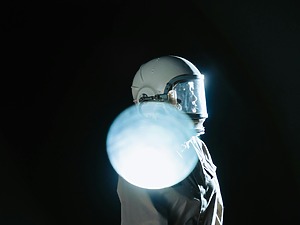But if the changes are subtle or entirely absent, diagnosis becomes much more challenging. Various data analysis methods allow MRI scans of a patient’s brain to be compared with those of thousands of healthy individuals, helping to detect deviations that may be difficult to notice with the naked eye.
Meanwhile, functional MRI (fMRI) can reveal which areas of the brain are active during specific tasks. This makes it possible to compare the neural activity of a healthy person with that of, for example, someone with a learning disorder while solving certain tasks – aiding in more accurate diagnosis and development of new treatment methods. This also requires a range of techniques and statistical models to ensure precision.
Additionally, some neurological or psychiatric conditions are not structural but functional in origin – epilepsy, for instance. In such cases, electroencephalography (EEG) or magnetoencephalography (MEG) is more useful, as these methods allow researchers to observe brain activity with high temporal resolution. However, the signals themselves are very noisy and vary depending on many factors.
This is where analysts apply signal filtering and transformation techniques to isolate meaningful information from background “noise”. For example, in epilepsy diagnosis, EEG signal analysis can help detect seizure-related patterns even before visible symptoms appear.
Overall, the intersection of neurology and data analysis provides doctors with powerful tools not only for more accurate diagnoses but also for a deeper understanding of disease progression and its effects on brain function. A data analyst can significantly ease the work of medical professionals by applying various computational techniques, ultimately improving patient care and opening new opportunities for personalised medicine.
What technologies have you worked with while analysing data in the field of neuroscience? Have you also contributed to developing new technologies yourself – for example, ones aimed at promoting emotional well-being?
Over the course of my research career, I have primarily worked with the analysis of neurophysiological signals such as EEG, MEG and electromyography (EMG). I have applied various statistical and machine learning methods to model the activity of primary cortical areas and to identify patterns in healthy brain function, comparing them with those of patients with neurological disorders such as dementia or multiple sclerosis. The main technologies I use in my work are the programming languages Python and MATLAB. They allow me to process large datasets simultaneously and, when needed, develop my own analytical methods.
Regarding the development of new methods, during my time in academia, I often adapted existing tools to solve new problems. However, I have contributed to improving a Functional Source Separation (FSS) algorithm and integrating it into the EEGLAB software toolbox.
This algorithm is a signal processing method designed to separate and identify distinct neural sources – for example, the primary somatosensory and motor cortices – using only electrophysiological data. This type of separation is crucial, as signals recorded from the scalp do not reveal their exact origins. In order to study specific brain regions, signal separation and source localisation are essential.
I have also used artificial neural networks for analyzing MRI data. In this case, brain scans of patients with Alzheimer’s disease, mild cognitive impairment, and healthy individuals were classified.
Additionally, I have applied graph neural networks to classify EEG signals from patients with Alzheimer’s disease, frontotemporal dementia, and healthy controls. The EEG data were transformed into connectivity matrices and then converted into graphs for classification tasks.
When I receive a dataset, I first form a hypothesis about what I would like to discover in it. Then I review the latest scientific literature and choose the best solution, whether it is a statistical model or a specific type of neural network. I apply the method that best fits the problem at hand.
As for emotional well-being, one particularly interesting project I worked on involved analysing the EEG data of astronauts aboard the International Space Station (ISS).
We explored several hypotheses, one of which was whether microgravity, disrupted circadian rhythms, isolation, and other unusual factors influence neural activity in space may exhibit prolonged “microstates” compared to the control population on Earth.
These studies are just small steps forward, but they are essential to ensuring the physiological well-being of astronauts – and potentially future space tourists. This research is still ongoing.
The future of neuroscience: what do you envision it will look like by the end of the 21st century?
As society ages and life expectancy increases, my hope is that the number of healthy years will increase as well. For that, advances in neurosciences are essential.
By the end of the 21st century, it is likely that highly precise mathematical and computational models – so-called digital twins – will be developed to simulate various neurological diseases, their progression, and responses to treatment. Such models would not only improve diagnostic processes but also enable personalised treatments by predicting which therapies are most likely to be effective for each patient.
One area that will undoubtedly continue to evolve is electrical brain stimulation. It is already being used to treat conditions like Parkinson’s disease, depression and epilepsy. Ongoing research in this field will likely lead to broader medical applications, for instance, using targeted electrical impulses to stimulate specific neural structures to restore vision. Accurate mathematical models would be instrumental in determining the optimal stimulation parameters, allowing for effective regulation of neural activity, restoration of impaired brain functions, reduction of side effects, and greater personalisation of therapy.
Moreover, such advanced models could significantly reduce the need for animal testing. Virtual biological systems – likely powered by artificial intelligence – could be used to test new drugs and treatment methods before moving to live experiments, helping to address ethical concerns and accelerate the development of new therapies.
All of this would bring neuroscience closer to becoming a true exact science – one in which we are not only able to observe and analyze brain activity, but also model it, predict changes and apply more evidence-based treatments.




